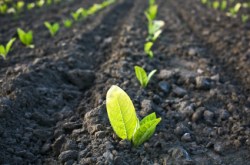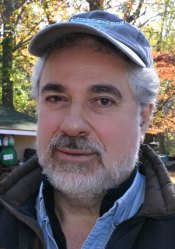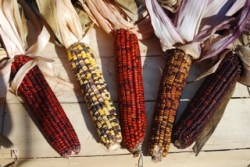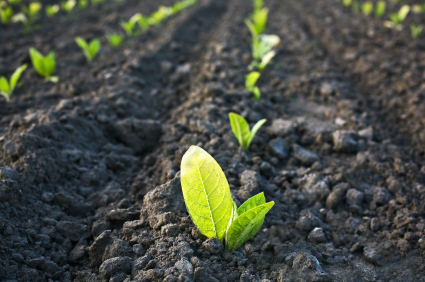
Nick Maravell has been farming organically and cultivating heirloom seeds on a leased 20-acre plot of land in Potomac, Md., for over three decades.
Nick’s Organic Farm is an anomaly in wealthy, suburban Potomac, where McMansions dominate the landscape, and its location has made it possible for Maravell to cultivate heirloom breeds of organic soy and corn seeds native to the Chesapeake Bay region. Corn seed is wind-pollinated, meaning organic varieties are easily contaminated by genetically modified pollen if grown anywhere near conventional farms. But Maravell’s farm is isolated, protected by a buffer of suburbia — an ideally situated piece of land that would be difficult to replace.
All this might explain why, when it became clear that Maravell would lose his lease, the surrounding community didn’t take it lightly. His landlord, the Montgomery County Board of Education, transferred the lease to the county, which then awarded a contract to a private developer to build soccer fields. The announcement — and subsequent findings that the county had violated the Open Meetings Act in handing the land over to developers without first soliciting public input — caused an uproar.
A group of supporters started a campaign called Save Nick’s Organic Farm, and a subsequent petition on the group’s website gained over 25,000 signatures. There’s also been an effort — spearheaded by Sophia Maravell, Nick’s 24-year-old daughter — to start a farm-based school for area children and a farm incubator program on the property.

Nick Maravell.
It’s unclear whether or not the campaign can do enough to put pressure on the county, but regardless, Maravell’s struggle raises big question about future of food in this country — if we want to have a future at all.
“It’s very rare to find farmland that is geographically isolated from conventional farms,” says Sara Shor, who has managed the campaign to save the farm. And she’s right. Once upon a time, para-urban farmland — fertile land on the outskirts of the city from which farmers could easily transport their product — was commonplace. Today, as cities grow and suburbs expand, farmland must compete with other valuable types of open space.
And while parks and soccer fields are crucial to our well-being, the fact is that farmland is disappearing at a rate of more than an acre every minute, according to the American Farmland Trust. From 1982 to 2007, at least 41 million acres of farmland in the U.S. were developed.
“The No. 1 obstacle to small farmers, and especially new and beginning farmers, is land access,” says Sophia. With so little land and startup capital available, leasing property is not uncommon, nor is the threat of being kicked off.
“That is the hidden danger of working leased land,” says Dea Keen, manager of the educational farm. “A lot of young farmers have gone that route because access to land is so difficult.”
But all land is not the same. Maravell — a farming veteran and member of the national decision-making body that shapes organic standards — has done more than simply lease these 20 acres; he’s transformed them. And he’s not alone — that’s what organic farmers do.

Nick Maravell grows, and saves the seeds of, heirloom varieties like this Indian corn.
Abandoning soil that’s been cultivated organically for over 30 years and starting from scratch is no small setback. As Keen says, “the soil is a living thing you invest in,” and the loss of Nick’s farm would be as devastating as the loss of any major investment. It’s troubling that the people calling the shots don’t seem to understand that.
Doug Schuessler, executive director of company building the soccer fields, says opponents of the project are misinformed about the “phenomenal shortage of fields” in the county. And he may be right. Dena Leibman, whose two daughters have played soccer with on the company’s fields for years, agreed that existing fields are in poor condition. But to her, the tradeoff isn’t worth it: “We’re going to evict this stellar farmer, scrape away 32 years of organic soil, take away his opportunity to turn this into a real agricultural education center, all for two fields and several parking lots? It’s like, how important is soccer?”
That’s a strong statement coming from a suburban soccer parent anywhere in the U.S. these days, and it shows how this conflict has galvanized a community. “The entire issue has brought people together,” Keen says. “They differentiate between local food and Whole Foods.”
They also may be starting to grasp the importance of good organic soil — and the importance of preserving what little of it we have left. If soil actually added monetary value to land — which it should, considering the quality of food that can be grown in quality soil — controversies like this one in Potomac might play out very differently, and we might have a lot more farmland to show for it.
The developers offered to compromise by setting aside one to three acres of the soccer park for an educational farm in its proposal. But that wouldn’t be enough for the farm incubator program or to continue seed saving.
The county has offered Maravell the option to farm on an old waste site, but Sophia says that doesn’t seem safe. Besides, she adds, “legally it takes three years to convert to organic farmland. But if you talk to a farmer like my dad he would say it takes much longer.”
Both the county and the developers are confident that the project will go ahead, and Keen admits that supporters of the farm don’t have many options left. They’ve considered staying put, taking a cue from the recent student occupation of the last remaining fertile farmland in Berkeley, Calif. — another battle over good soil. The developers’ lease starts in August. Until then, Sophia says, “the strategy is to keep applying pressure and try to get our proposal and our vision out there. Once we tell people what our vision is, they’re very supportive.”
“It’s a very emotional connection I have to this land,” she continues. “I think that sense of place is lost to a lot of people in the U.S. It’s something else we’re trying to teach here.”


